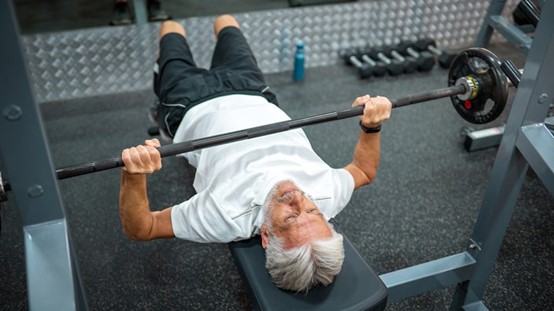Push-Up vs. Bench Press: Which Strengthening Exercise Is Better?
Take the push-up and bench press, for example. Both exercises work upper-body muscles. How do you choose between the two? Learn the differences between these exercises to decide which is better for your needs.
What is the difference between a push-up and a bench press?
The following differences between push-ups and bench presses set these upper-body exercises apart.
Starting position
You start push-ups and bench presses in opposite positions. With a push-up, your body is face down on the floor as you lower and lift your body weight. But with a bench press, you lie face up on a weight bench as you lift and lower a free weight.
Both exercises involve push movements that require flexing and extending your shoulder and elbow muscles. But a push-up is a closed kinetic chain exercise because your hands remain on the floor as you move. A bench press is an open-chain exercise because your hands move freely during the movement.
Muscle activation
Research shows that push-ups and bench presses activate similar muscle groups. Both exercises may strengthen the following upper-body muscles:
l Chest (pectorals and serratus anterior)
l Shoulders (deltoids)
l Arms (triceps)
But unlike a bench press, a push-up is a total-body exercise. It may activate more core muscles, such as the abdominals and latissimus dorsi in your back.
Exercise intensity
A push-up is a body-weight exercise that requires zero equipment, while a bench press requires weights, such as a barbell.
You can adjust push-ups and bench presses to suit different fitness levels. For example, beginners can make push-ups easier by doing half push-ups on their hands and knees instead of their hands and feet. You can use lighter weights to make bench presses less challenging.
But a bench press may be better than a push-up for more advanced athletes. This is because you can easily increase the intensity and resistance by lifting more weight as you get stronger. Push-ups use your body weight for resistance. But you don’t actually lift your entire weight because your legs support some of the load. Some research suggests that you support roughly 69% to 75% of your total body weight during traditional push-ups.
Push-ups can be difficult for beginners to master. But once you do, it’s hard to add resistance. Wearing a weighted vest can help, but you won’t be able to add as much weight as much as you can with a bench press. You can, however, increase push-up intensity by using a resistance band or elevating your feet.
Studies show that you may be able to do more push-ups than bench presses, even when the resistance is the same. Differences in starting position and overall exercise intensity might explain why.
How to do a push-up
Here are the steps for how to do a push-up with proper technique.
l Step 1: Get into a high plank position with your palms and toes touching the floor. Your hands should be a little wider than shoulder width apart. Spread your fingers for added stability. Your toes should be curled under with your heels pointing toward the ceiling. You can spread your fingers for added stability.
l Step 2: Squeeze your abs to engage your core. Make sure your body is in a straight line from your head to your heels. Do not lift your hips or let your midsection sag.
l Step 3: Bend your elbows to lower your chest toward the floor. Remember to keep your back straight and your core engaged.
l Step 4: Exhale as you press through your palms to straighten your elbows and return to the starting position. Do not lock your elbows.
l Step 5: Repeat for the desired number of reps.
How to do a bench press
You need a weight bench and free weights to do a bench press. The exercise is called a bench press when you use a barbell. It is often called a chest press when you use dumbbells.
Here are the steps for how to do a bench press with proper technique.
l Step 1: Place a flat bench inside the squat rack. Lie on your back with your feet flat on the floor.l Step 2: Make sure you have a spotter to help you unrack the barbell. Grip the barbell with your hands slightly wider than shoulder width apart. Your palms should face up and slightly away from your face. Your elbows should be extended. The barbell should hover over the center of your chest. This is the starting position.
l Step 3: Bend your elbows, and slowly lower the bar toward your chest. Keep your elbows tucked along your sides and your wrists stiff.
l Step 4: Lower the bar until it is right above your chest. Pause briefly.
l Step 5: Exhale as you powerfully press the bar back to the starting position.
l Step 6: Repeat for the desired number of reps.



 Tel : +0592 6105769
Tel : +0592 6105769 Fax : +0592 6105769
Fax : +0592 6105769 Email : sales@wuwind.com
Email : sales@wuwind.com